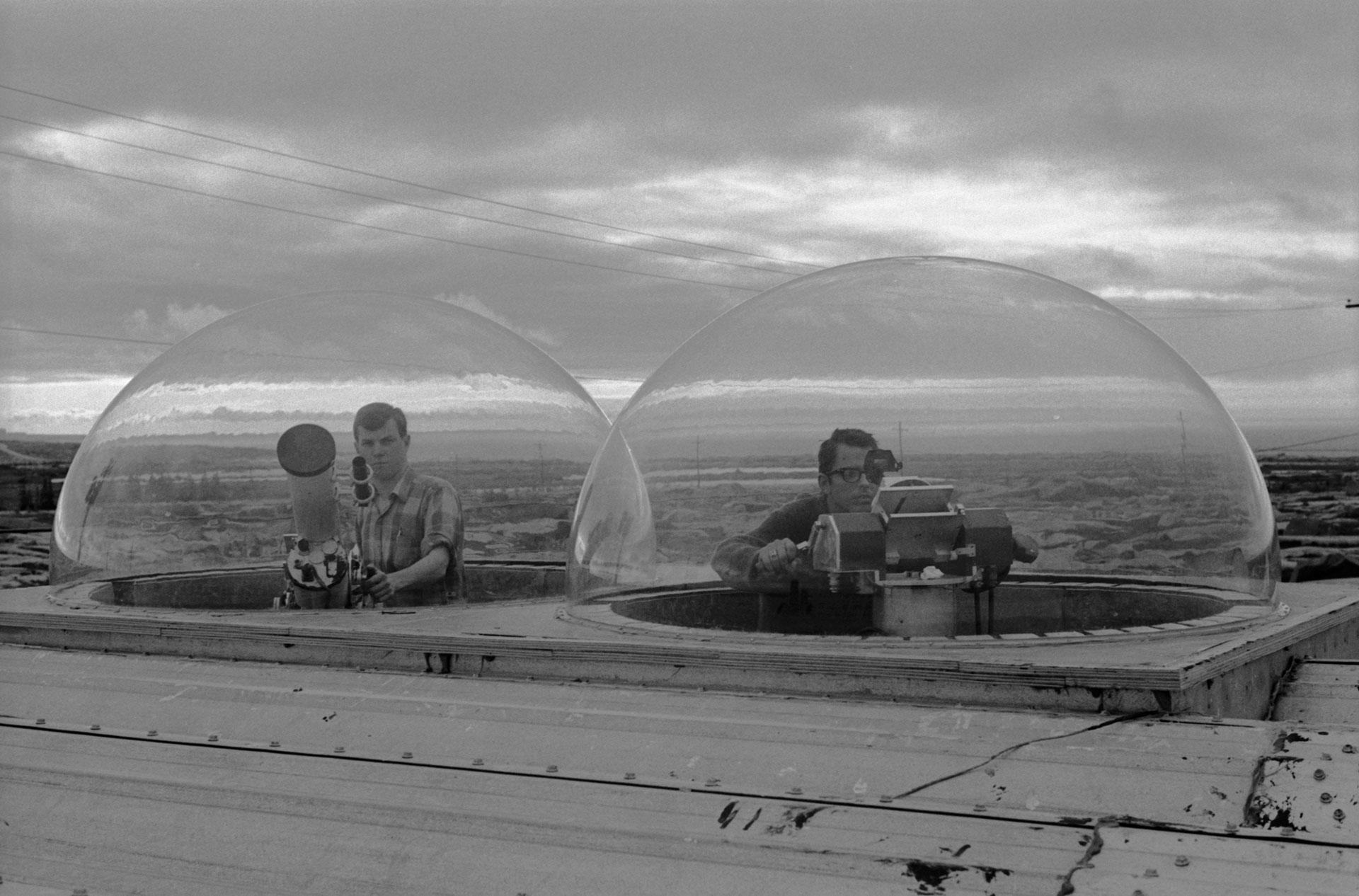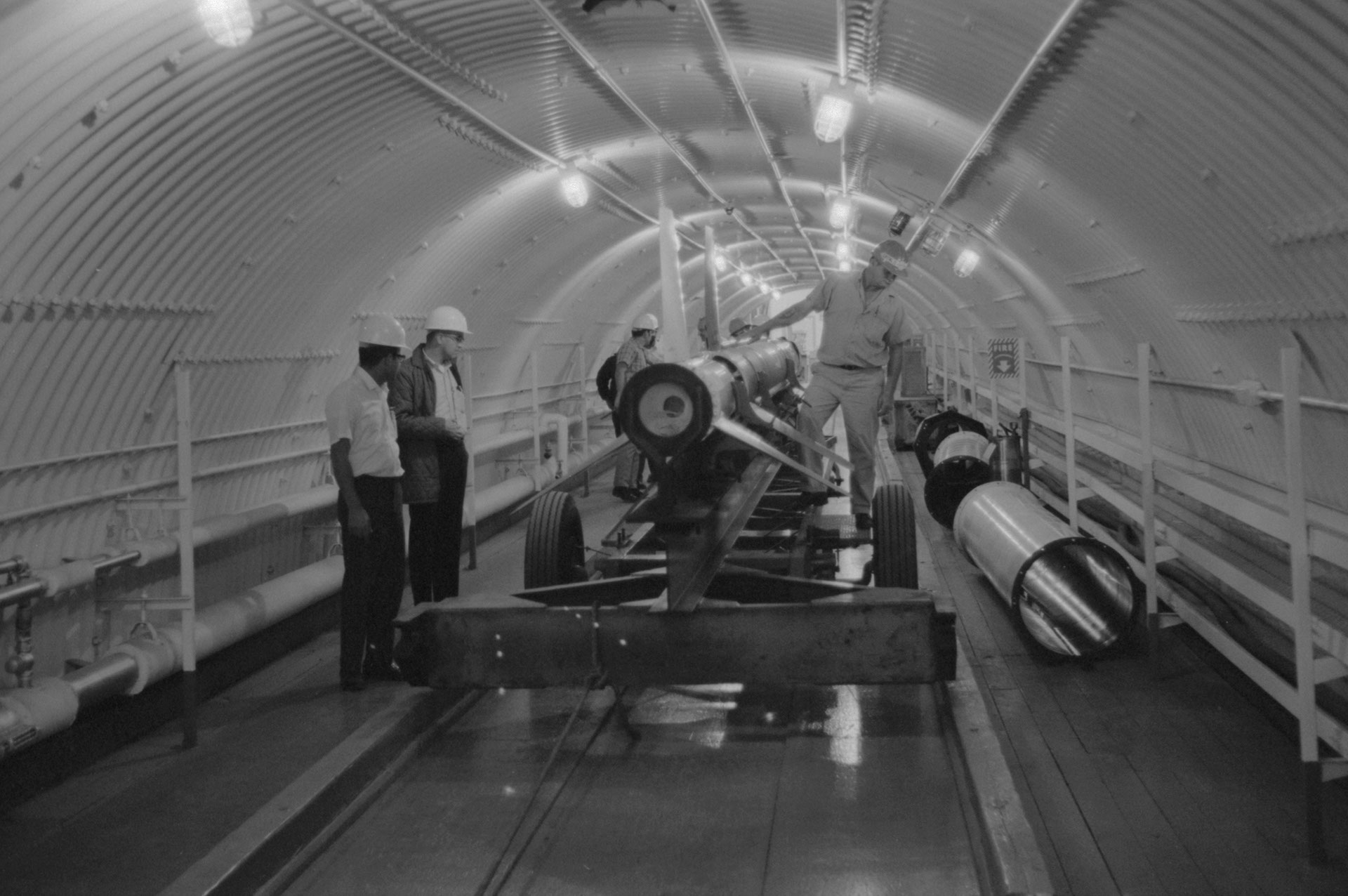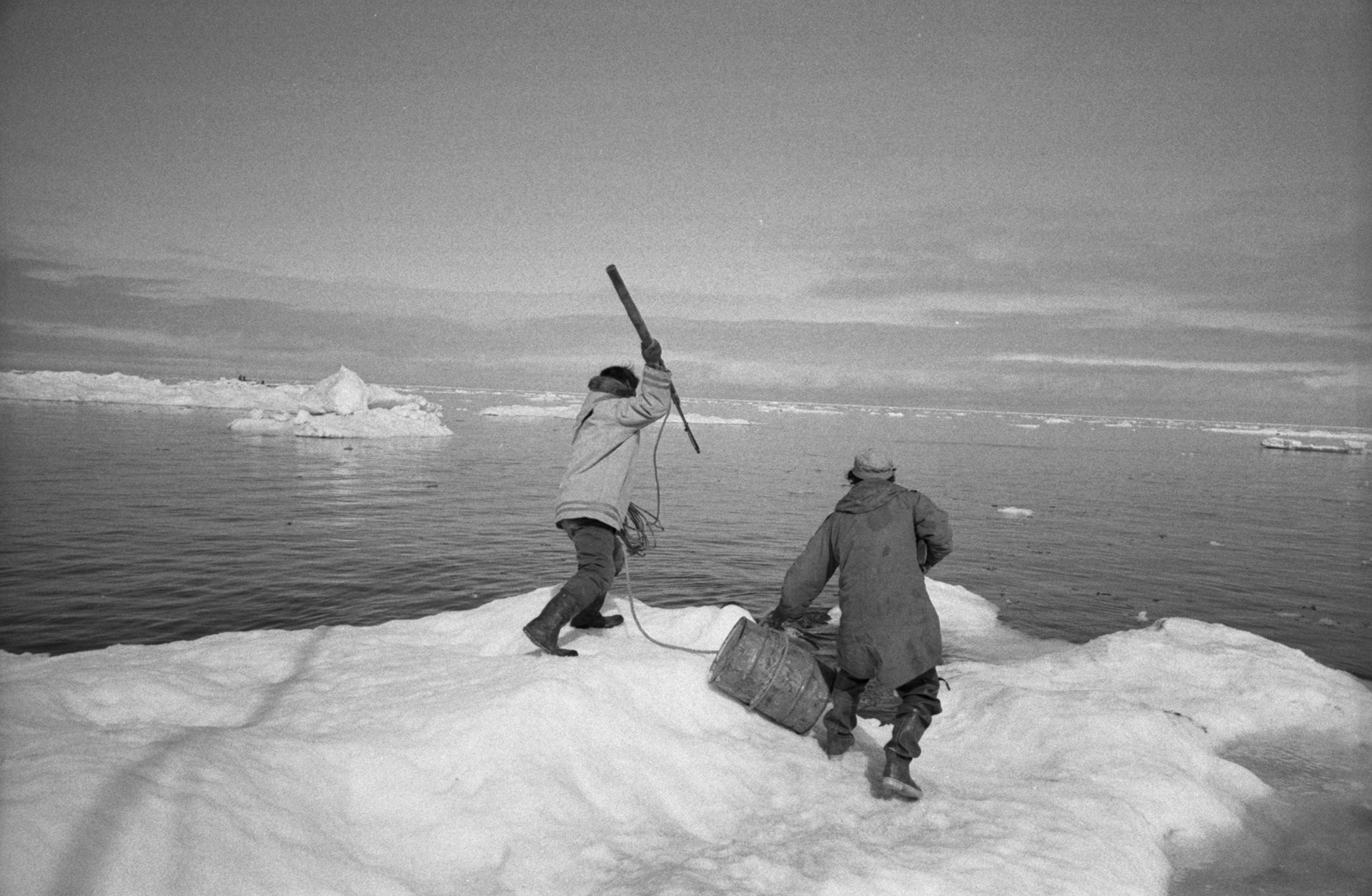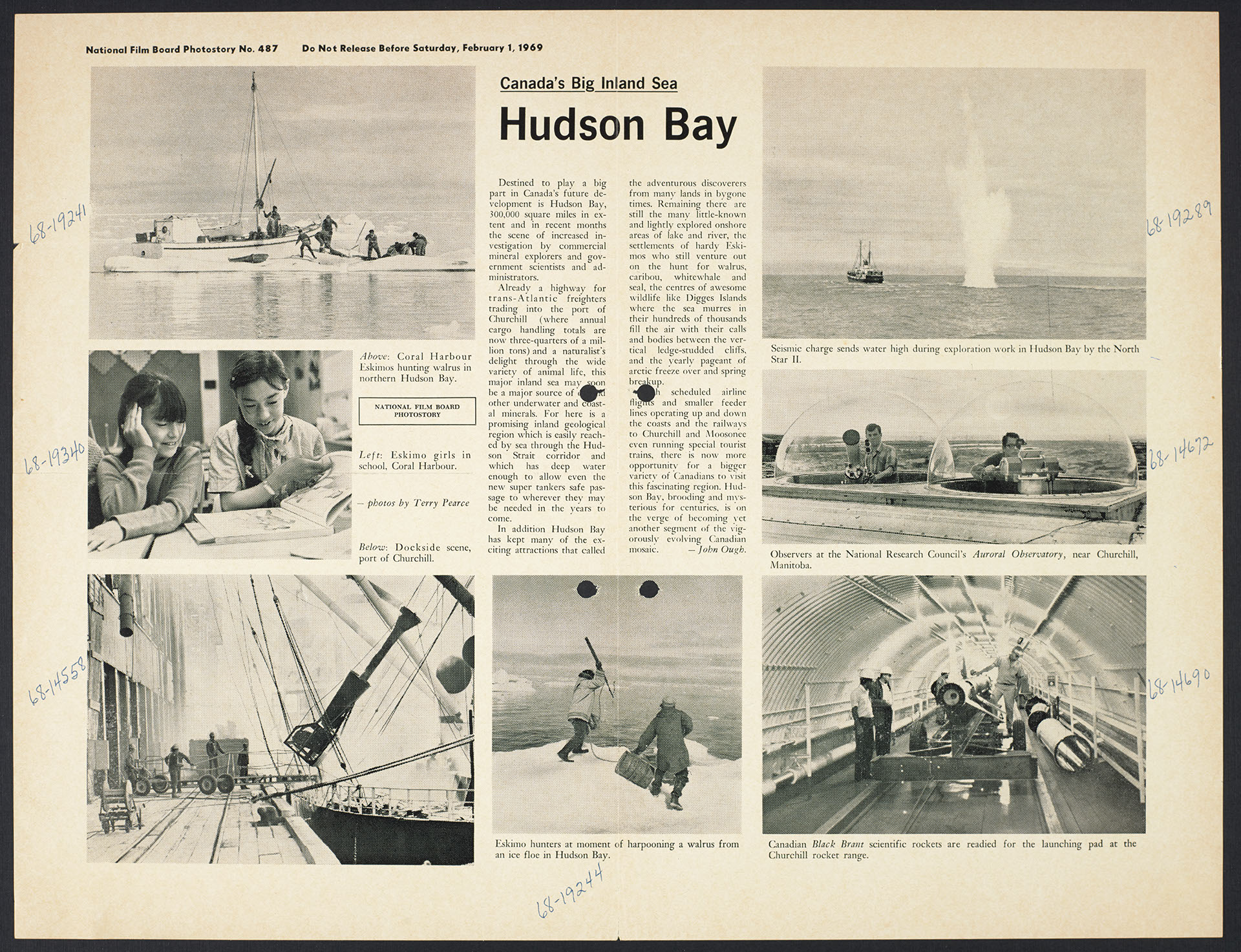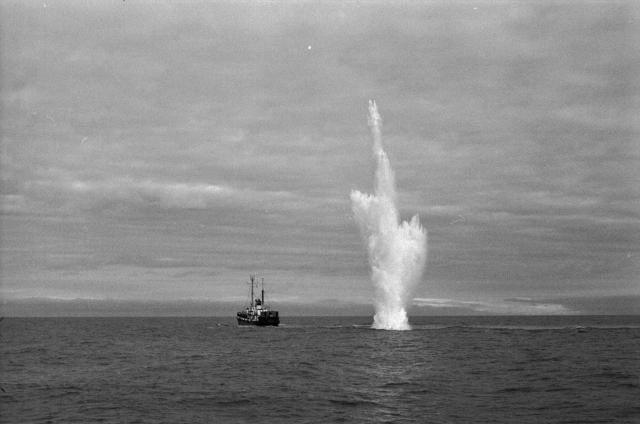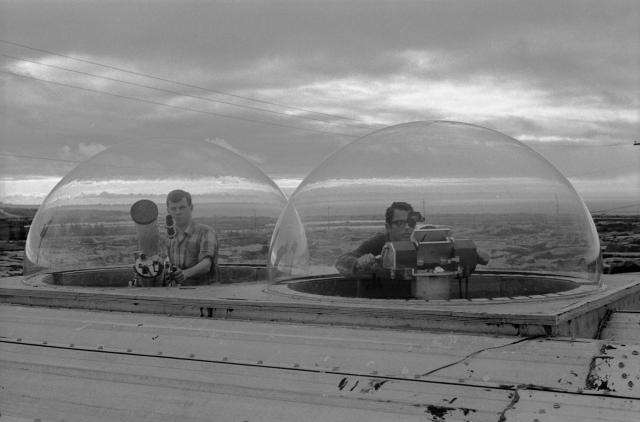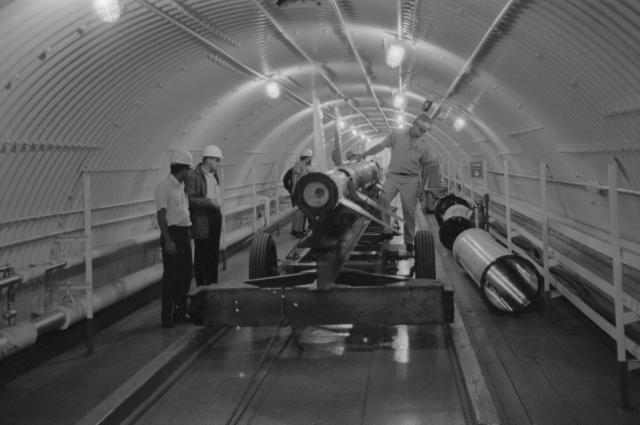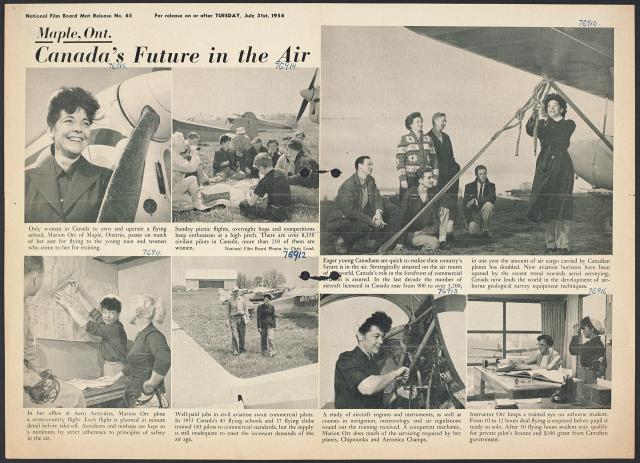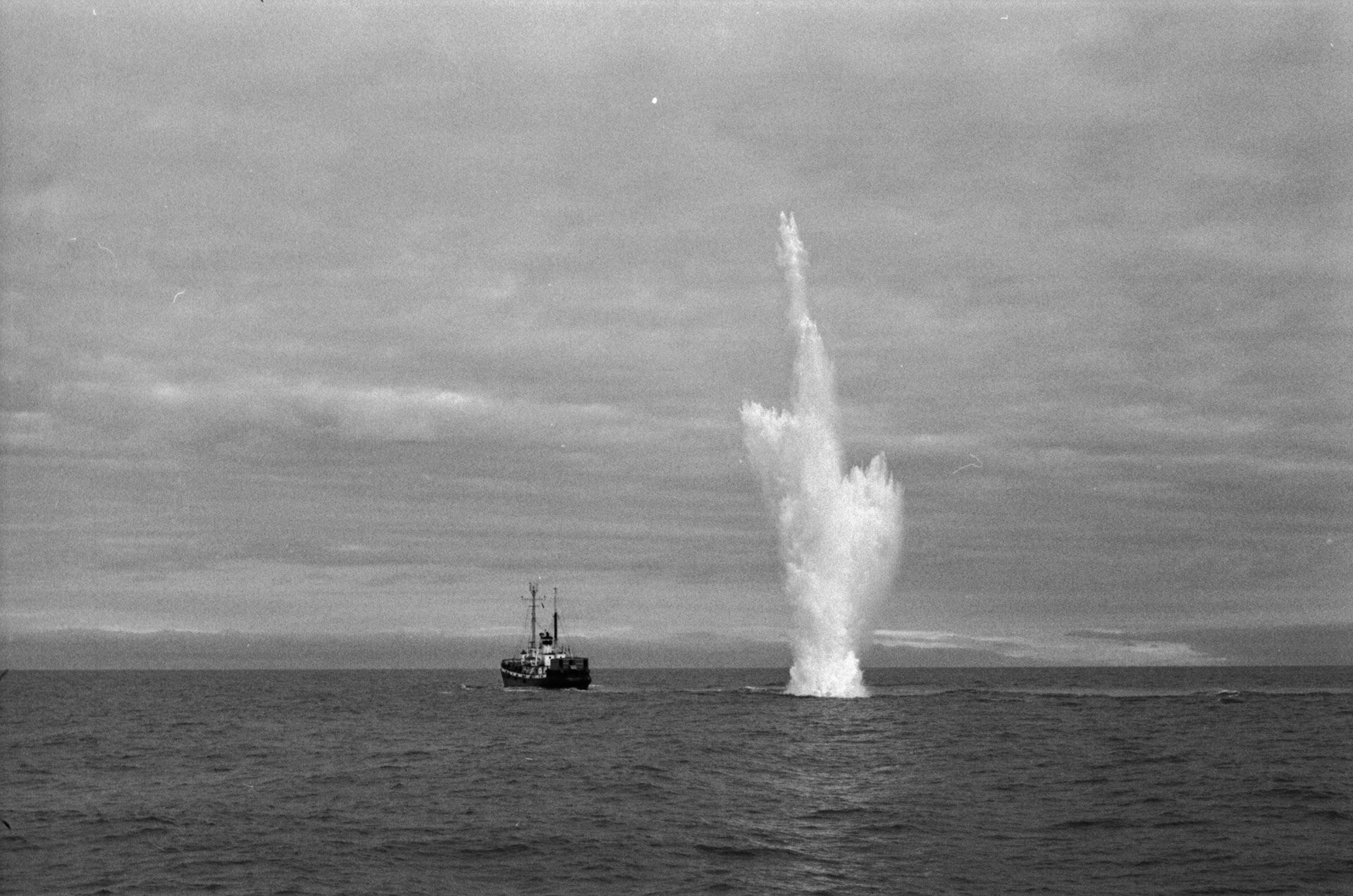
Photostory #487: Canada's Big Inland Sea: Hudson Bay
Photographers
Maker
National Film Board Photostory - [Story by] John Ough, photos by Terry Pearce
Release Date
February 1, 1969
Collection
CMCP fonds
Credit Line
Canadian Museum of Contemporary Photography fonds, National Gallery of Canada Library and Archive
Main Text
Destined to play a big part in Canada's future development is Hudson Bay, 300,000 square miles in extent and in recent months the scene of increased investigation by commercial mineral explorers and government scientists and administrators. Already a highway for trans-Atlantic freighters trading into the port of Churchill (where annual cargo handling totals are now three-quarters of a million tons) and a naturalist's delight through the wide variety of animal life, this major inland sea may soon be a major source of oil and other underwater and coastal minerals. For here is a promising inland geological region which is easily reached by sea through the Hudson Strait corridor and which has deep water enough to allow even the new super tankers safe passage to wherever they may be needed in the years to come. In addition Hudson Bay has kept many of the exciting attractions that called the adventurous discoverers from many lands in bygone times. Remaining there are still the many little-known and lightly explored onshore areas of lake and river, the settlements of hardy Eskimos who still venture out on the hunt for walrus, caribou, whitewhale and seal, the centres of awesome wildlife like Digges Islands where the sea murres in their hundreds of thousands fill the air with their calls and bodies between the vertical ledge-studded cliffs, and the yearly pageant of arctic freeze over and spring breakup. With scheduled airline flights and smaller feeder lines operating up and down the coasts and the railways to Churchill and Moosonee even running special tourist trains, there is now more opportunity for a bigger variety of Canadians to visit this fascinating region. Hudson Bay, brooding and mysterious for centuries, is on the verge of becoming yet another segment of the vigorously evolving Canadian mosaic.
Subjects:
Locations:

